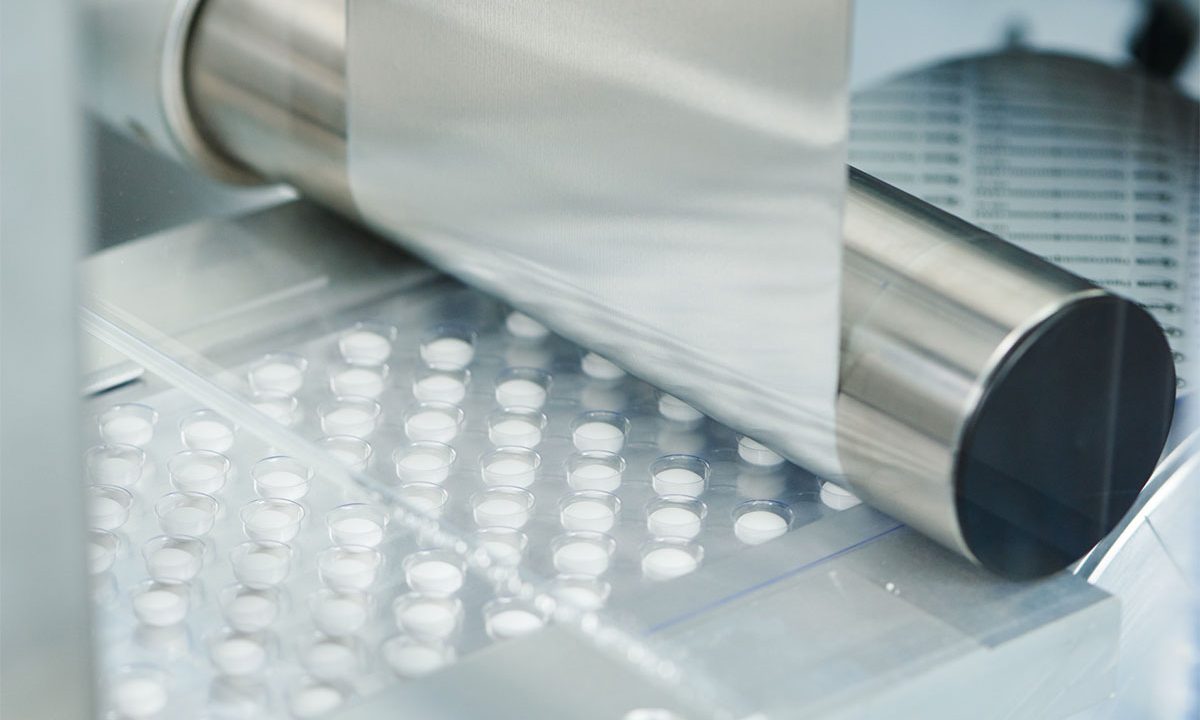Pharmaceutical packaging has kept changing with time. From developing water-resistant paper packaging to coming up with the perfect polyester water-proof blisters, pharmaceutical packaging has kept up with the changing demands. Increasing the shelf life and protecting the medicinal drugs from altering, is the primary requirement from packaging.
Over time, it’s been found that sealing blisters with polymer lids has a limited amount of shelf life and changes a lot with the temperature and humidity, causing oxygen and moisture to react with the medicine. Which alters the chemical composition of the drug and can pose a risk in the treatment. The high melting points of metal thus come into use. Aluminum foils have been used for decades as a packaging material and continue to be the best containment material for packaging ingestible products.
For the most volatile and unstable high dosage pills, alu-alu blisters are the best way to contain the elements. The aluminum barrier keeps out all the environmental factors that can meddle with the drug and decrease shelf life. But alu-alu blister packing comes with costs for material and machine. Also, it is not a dire need for common medications that are stable. So here are the most important questions to ask before you choose alu-alu blister packaging.
What is an Alu-Alu Blister?
In an alu-alu blister or CFF (cold formed foil) blister the sealing machine uses an aluminum based layer for both the base and lidding, particularly in Europe, India and East Asia. Since these economies are adept to blister packing, they require alu-alu packing that increases the shelf life of the product and provides protection till its final use. Hence most alu-alu blister sealing machines around Europe, India and Asia are built to use nylon, aluminum and PVC layering. The use of this mixture makes the packaging more efficient at providing protection from light, heat, oxygen and moisture.
Alu-alu blisters are made using a cold forming technique where the machine presses the laminate onto a molding tray without the use of heat. The cold plate has pins to create the cavity for placing the product. After which, the sealing tool puts an aluminum foil lidding on the blisters.
Why Does a Product Need Alu-Alu Blisters?
Every pharmaceutical product out there has an Active pharmaceutical Ingredient (API) which is the most unstable when exposed to environmental factors. A packaging material must ensure that this ingredient remains stable until it is consumed by the user.
The stability of an API can be disbalanced with environmental factors like thermal spoil, oxidization, UV rays, microorganic infection and moisture ingress. In a lot of pharmaceutical tablets and capsules, there is an additional layer of ingestible coating that keeps moisture away from the core of the drug. There are several areas where a drug is fit for use even after getting in contact with moisture. There are painkillers used by dissolving in a cup of water.
But in addition to the features added to the pills, the pharmaceutical products need special protection and containment. More so when the active ingredient is highly unstable, which is the case with most high dose medications used for diseases like diabetes, cancer, and gastro-intestinal issues. So, when a medicine that is unstable to hydrolysis (getting altered by moisture), light, and any environmental change needs a 360° barrier against the slightest of moisture permeability, light and temperature changes. This is where a drug needs an aluminum layer in both base and lid, as it leads to containment and stability until the product lands in the hands of its end user.
The level of insulation a drug needs from the destabilizing factors can only be known with a tough stability test done with different blister sealing methods, machines and environments to match the humid and sunny conditions in economies like India, China, and Latin countries. So, if you’re supplying regular medication for seasonal illnesses, alu-alu packing might be a lot of work.
Can All Pharmaceuticals be Packed in Alu-Alu?
You can absolutely use alu-alu packing for all pharmaceuticals. If you’re planning to give cough-drop lozenges a boost in shelf life or giving more time to a user to finish the strip of paracetamol. But the only thing separating alu-alu blisters and PVC blisters is the price tag that comes with every roll of aluminum blister foil. Yes, alu-alu blisters aren’t budget friendly if you’re making medicine for regular users and over the counter buyers for medicines that don’t need prescriptions. The expense of alu-alu blisters might only be good to ROI if the drug has higher demand and requires special care till it reaches its patient.
With pharmaceutical products, the packaging is the most important part if a medicine needs to be globally accepted as fit for use. Alu-alu blister packing might be a game changer for your life saving product. To know about alu-alu blister sealing machines and how they benefit your medicine, visit Accupack India.



